An ideal monoatomic gas is taken through the thermodynamic states A→B→C→D via the paths shown in the figure. UA,UB,UCandUD represent the internal energies of the gas in the states A, B, C and D respectively. Which is the wrong statement from the following ?
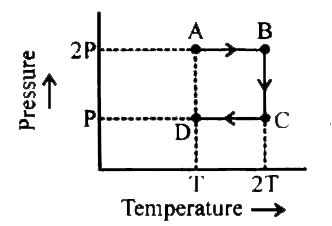
UC>UD
UB=UC
UB<UA
UA=UD
The correct Answer is:C
The internal energy of a gas depends only upon the temperature.
∴UA=UD at temperature T
Similarly, UB=UC at temperature 2T
These are correct statements.
UC is at temperature 2T and UD is at temperature T.
∴UC>UD is also correct.
But UB at 2T<UA at T is wrong.
Topper's Solved these Questions
- KINETIC THEORY OF GASES ,THERMODYNAMICS AND RADIATIONBOOK - MARVEL PUBLICATIONCHAPTER - KINETIC THEORY OF GASES ,THERMODYNAMICS AND RADIATIONEXERCISE - TEST YOUR GRASP - 9
30 Videos
- INTERFERENCE AND DIFFRACTIONBOOK - MARVEL PUBLICATIONCHAPTER - INTERFERENCE AND DIFFRACTIONEXERCISE - TEST YOUR GRASP
20 Videos
- MAGNETIC EFFECTS OF ELECTRIC CURRENTBOOK - MARVEL PUBLICATIONCHAPTER - MAGNETIC EFFECTS OF ELECTRIC CURRENTEXERCISE - MCQ
195 Videos
Similar Questions
One mole of an ideal monoatomic gas is taken through a cycle a-b-c-a as shown in figure. Find the difference in maximum and minimum value of internal energy of the gas during the cycle
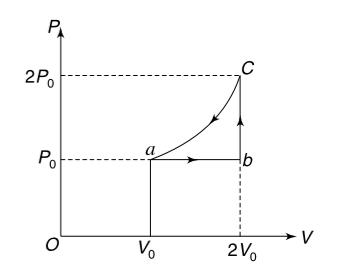
View SolutionOne mole of an ideal diatomic gas undergoes a transition from A to B along a path AB as shown in the figure

The change to internal energy of the gas during the transition is
View Solution
Knowledge Check
Let ΔU1 and ΔU2 be the changes in internal energy of an ideal gas in the processes A and B then
AΔU1>ΔU2BΔU1=ΔU2CΔU1<ΔU2DΔU1≠ΔU2An ideal gas is taken from state 1 to state 2 through optional path A,B,CandD as shown in the PV diagram. Let Q,WandU represent the heat supplied, work done and change in internal energy of the gas respectively.
Then,
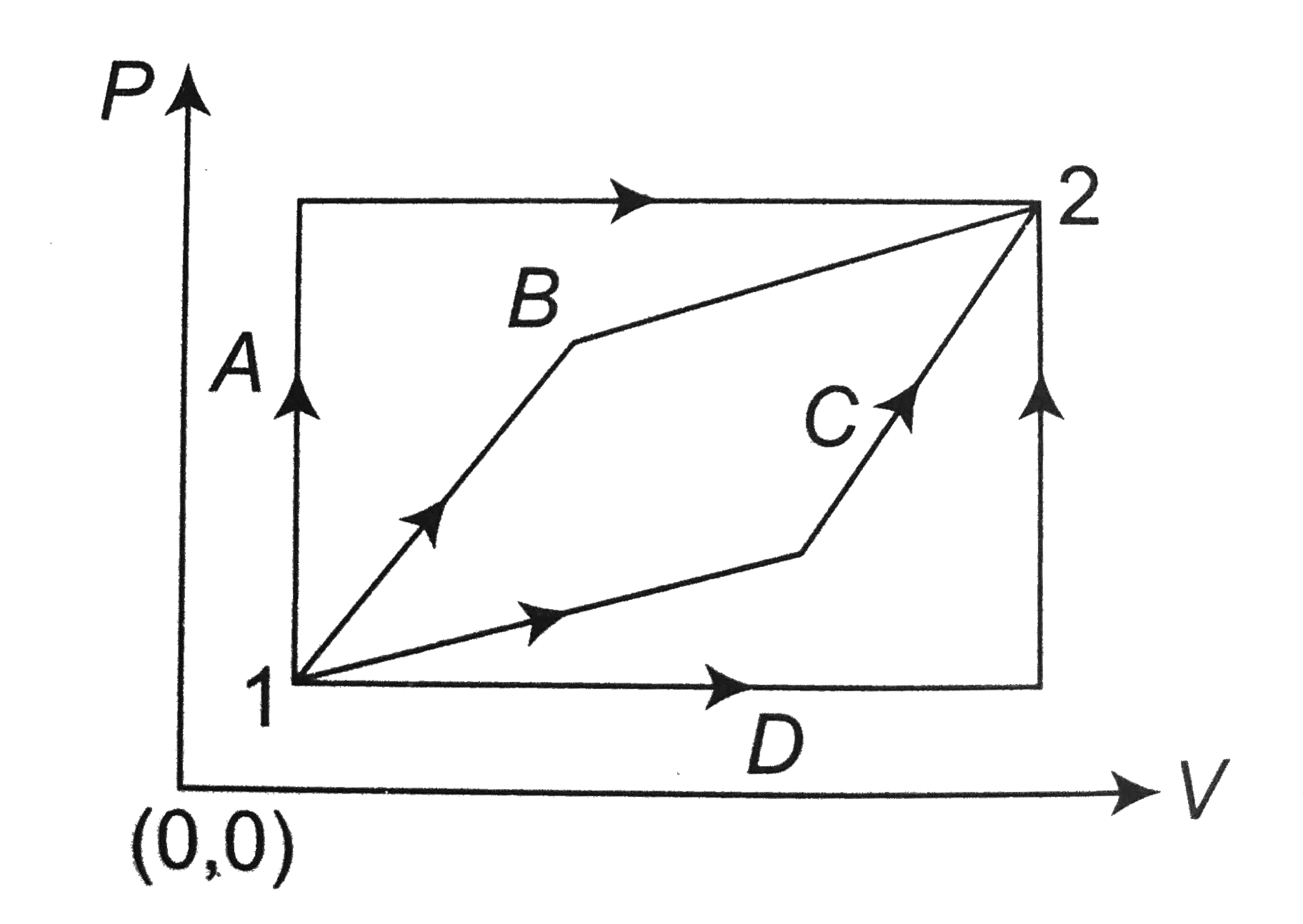 AQA−Q(D)=WA−W(D)BQB−W(B)>QC−W(C)CWA<W(B)<WC−W(D)DQA<Q(B)<QC−Q(D)
AQA−Q(D)=WA−W(D)BQB−W(B)>QC−W(C)CWA<W(B)<WC−W(D)DQA<Q(B)<QC−Q(D)One mole of an ideal diatomic gas undergoes a transition from A to B along a path AB as shown in the figure. The change in internal energy of the gas during the transition is
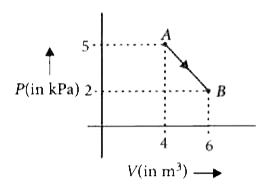 A20 JB−12kJC20 kJD−20kJ
A20 JB−12kJC20 kJD−20kJ
calculate the work done by a gas as it is taken from the state a to b, b to c and c to a as shown in
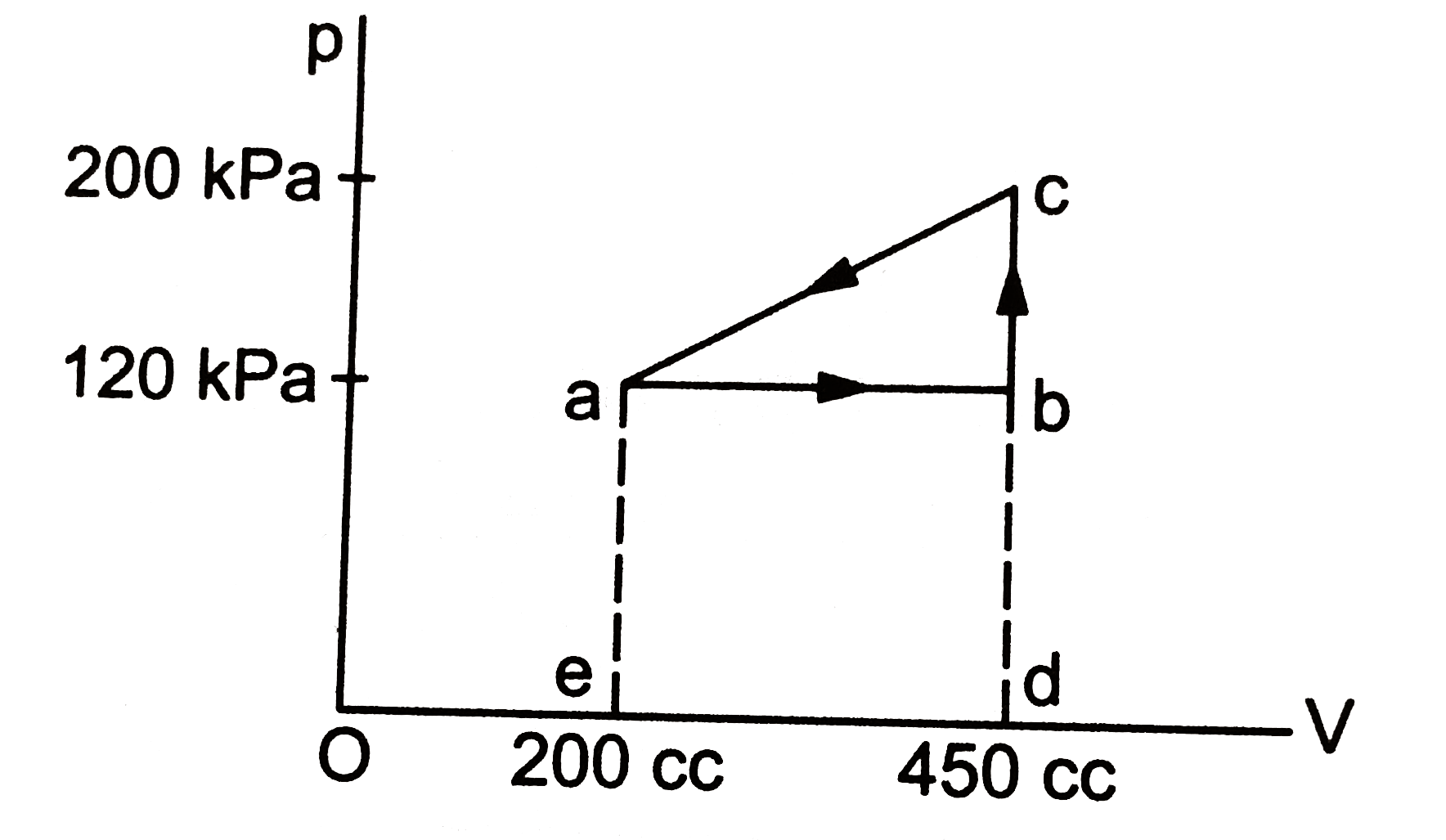
View SolutionAn ideal gas is taken round a cyclci thermodynamic process ABCA as shown if Fig. If the internal energy of the gas at point A is assumed zero while at B it is 50 J. The heat absorbed by the gas in the process BC is 90 J.
(a) What is the internal energy og the gas at point C ?
(b) How much heat energy is absorbed by the gas in the process AB?
(c ) Find the heat energy rejected or absorbed by the gas in the process CA.
(d) What is the net work done by the gas in the complete cycle ABCA ?
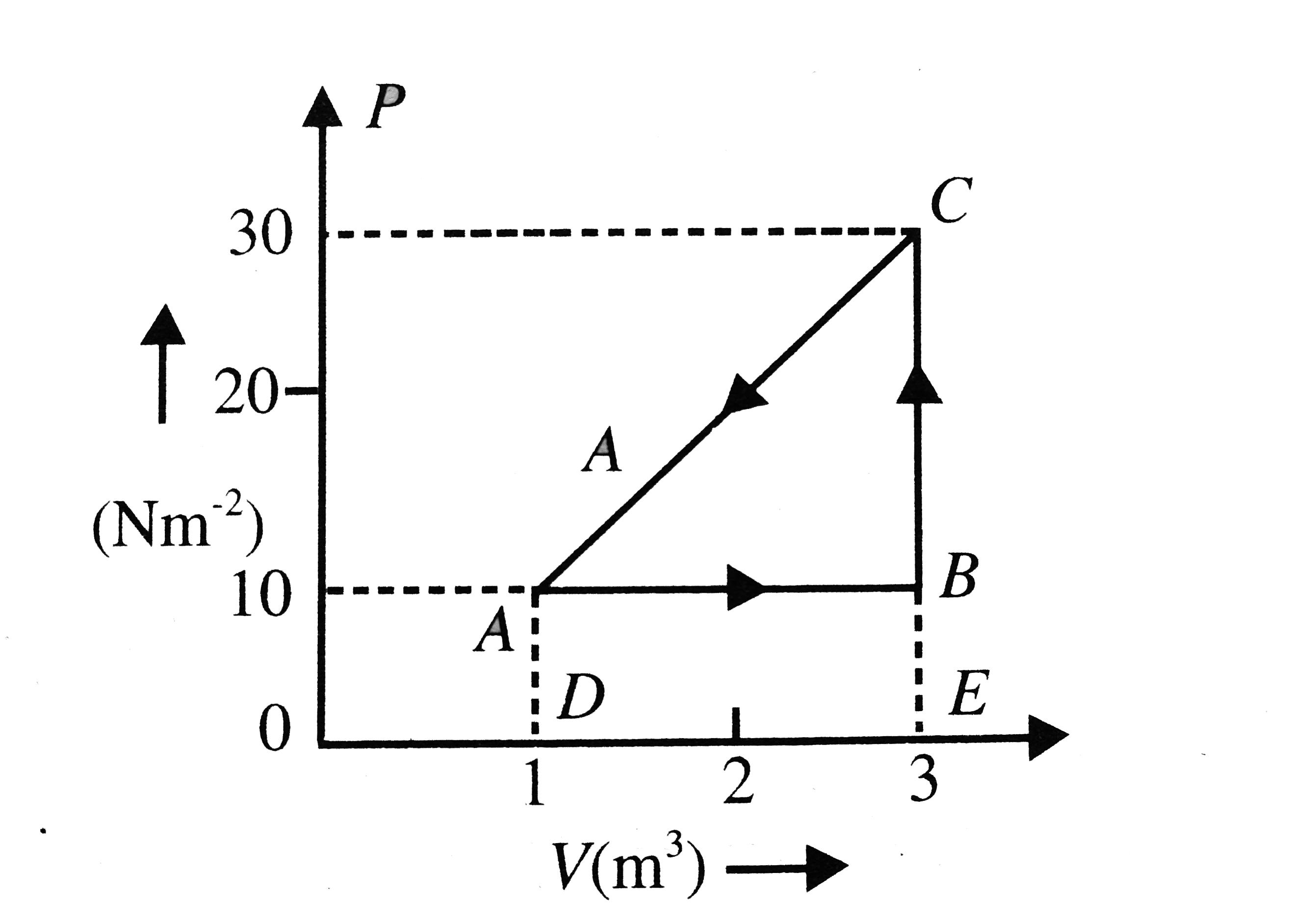
View SolutionOne mole of an ideal diatomic gas undergoes a transition from A to B along a path AB as shown in the figure,
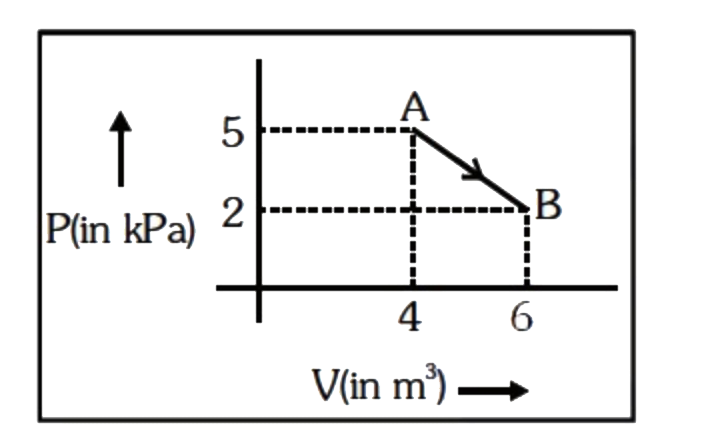
The change in internal energy of the gas during the transition is :
View SolutionOne mole of an ideal monoatomic gas is caused to go through the cycle shown in figure.Then the change in the internal energy of gas from a to b and b to c is respectively :

View SolutionOne mole of an ideal mono-atomic gas is caused to go through the cycle shown in the figure below. Then the change in the internal enegry in expanding the gas from a to c along the path abc is:
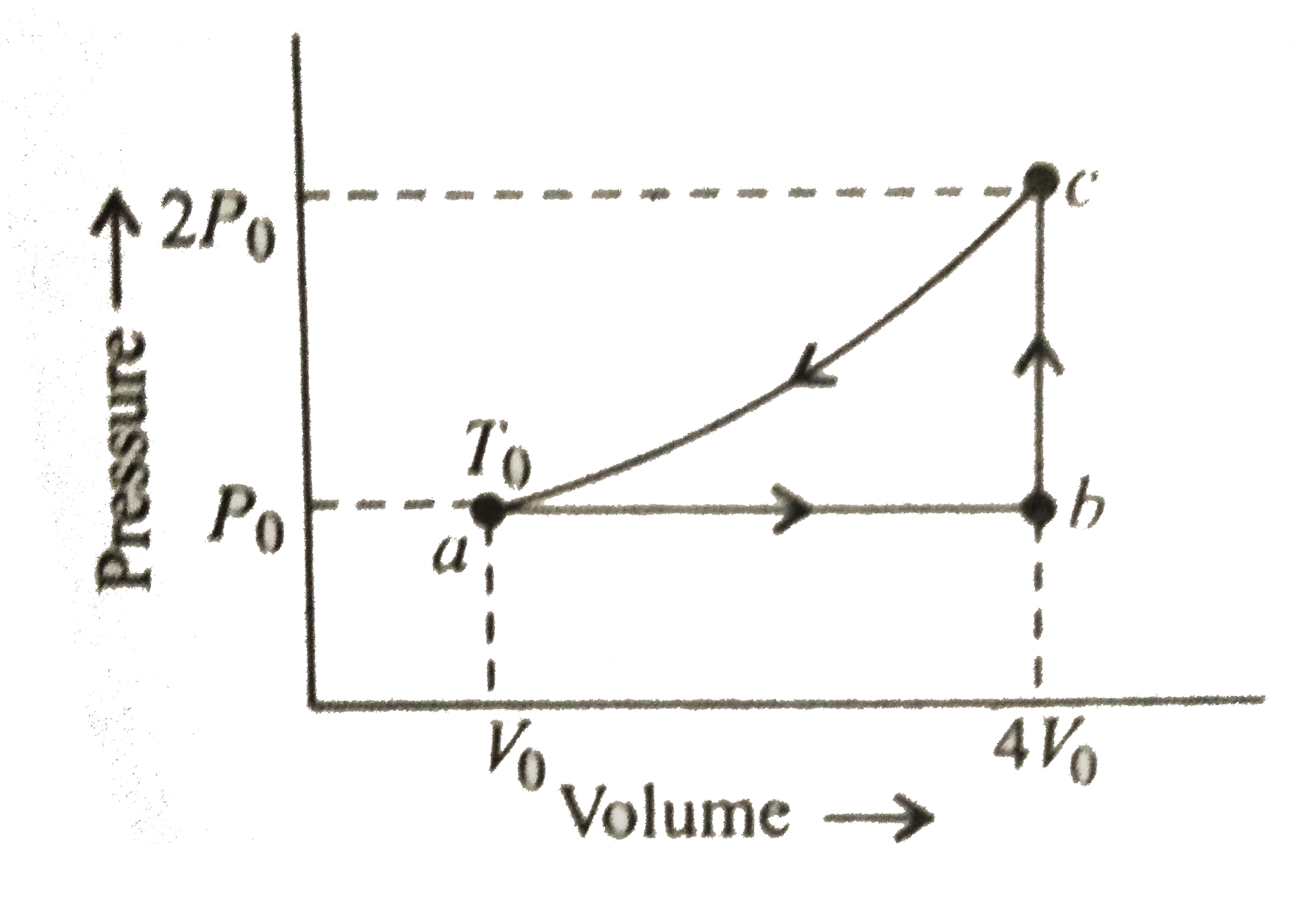
View Solution
